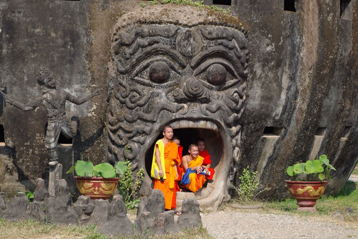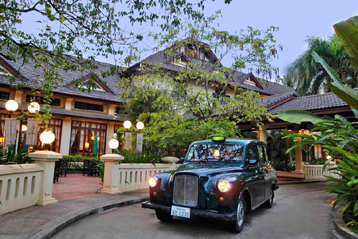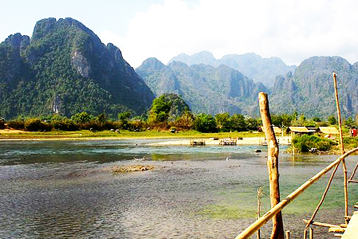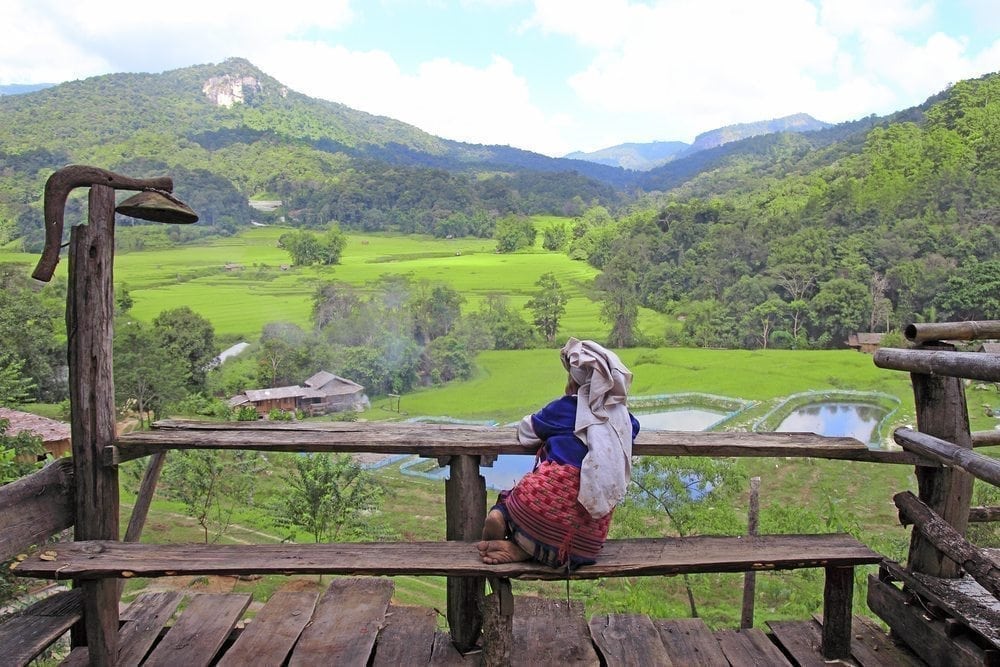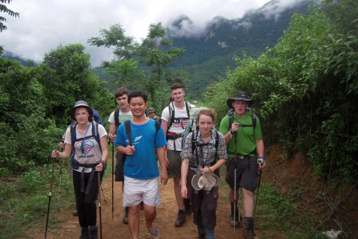Laos: Drifting Amid Lost Dreams
With 17 years' experience navigating the Mekong River, Mr Puoy is reckoned to be the best riverboat captain in southern Laos. The watery labyrinth he works in contains a reputed 4000 islands, so he needs to be pretty good.
But right now, at the end of a harsher than usual dry season, the region's Lao moniker Si Phan Don (Four Thousand Islands), seems just a tad inaccurate.
In a fading tropical dusk, Mr Puoy is steering the imposing teak-trimmed hulk of the Vat Phou through a dynamic environment of sand bars and swirling eddies, ripples and rapids.
Rustic nets are being cast in graceful arcs from low-slung boats bobbing just centimetres above the waterline, as local ferries transport monks, buffaloes and backpackers across the Mekong's silvery expanse.
Like any good riverboat, the Vat Phou comes with an interesting backstory. It used to transport teak and rice down the Mekong, and was once owned by a Lao princess.
Recently rock royalty Sir Mick Jagger chartered the whole shebang, replicating our own itinerary of visiting local villages, French-colonial towns, and Khmer temples.
In a telling reminder of the area's remoteness, apparently no one recognised rock's most iconic hips and lips.
David Beckham would no doubt be mobbed by the kids playing on the Mekong's sandy makeshift football pitches, but in one of Indochina's quieter corners, music's most kinetic 65-year-old was just another skinny falang with a flash camera.
Si Phan Don hasn't always been drifting off the edge of the map. On the tiny islands of Don Det and Don Khon lies evidence of a grand French plan to transform Asian trade in the 19th century. Linked by a bridge from French colonial times, the twin islands are now a sleepy haven for backpackers who arrive for a night and stay for a month.
Amidst the scrawled signs for bumpy onward transport to Vietnam and Cambodia, a compact French locomotive and a few metres of rusted track are all that remain of Paris's designs.
Downstream the Khon Phapeng waterfalls thunder towards the border with Cambodia. During the wet season the cataracts swell to a width of 11km, and year round, travel and transport upstream is impossible.
The French planned to link the Mekong's southern and northern banks by Don Det's toytown railway, eventually hoping to expand the lucrative trade caravan all the way from Beijing to Saigon and the South China Sea. The weed-strewn and rusted hulk of a locomotive remains a poignant counterpoint to lost colonial dreams.
More colonial ambition lingers in the sleepy riverside town of Champassak. Before the Pathet Lao Socialist revolution in 1975, the town was the seat of Lao royalty, and amid the Chinese shophouses and wandering cows and buffaloes are glorious French mansions. The faded ochre residences are now dusty and overgrown, but still stately and elegant, if curiously out of place in the shimmering tropics of Laos.
More layers of history reside at the nearby Wat Phu temple, arrayed on the gentle slopes of the Phu Pasak range, and trimmed with mini-glens of frangipani. Sanskrit and Chinese inscriptions confirm the Unesco World Heritage site was inhabited in the 5th century, but the star focus in contemporary terms is the pair of gracious Khmer temples - male and female - that predate Cambodia's Angkor Wat by several centuries.
Compared to the tourist bustle of Siem Reap, this is a sedate and relaxing scene, with just a few Lao tourists ascending the temple's 180 steps slowly in the afternoon heat.
By the 12th century, the focus of Khmer society had moved on to the architectural overachievement of Angkor Wat, and this sleepy but spectacular slice of Indochina again drifted into languid obscurity until the thwarted 19th century dreams of Paris merchants. And despite a recent visit by an incognito rock superstar, it's still in little danger of becoming the Next Big Thing.
Four thousand islands, they reckon. On a river cruise this laidback and relaxing, who's counting?
CHECKLIST
Getting there: One of the best ways to get there is to go on Cathay Pacific to Hanoi or Ho Chi Minh City and then connect with Vietnam Airlines.
Cruising: Mekong Cruises runs three-day trips on the Vat Phou in southern Laos, and two-day cruises ending in Luang Prabang on the Luangsay in northern Laos. Accommodation is in well-appointed, air-conditioned cabins. All meals are included, with a focus on Lao, Thai and Vietnamese cuisine.
More guide...
Responsible Travel
Asia Travel News


